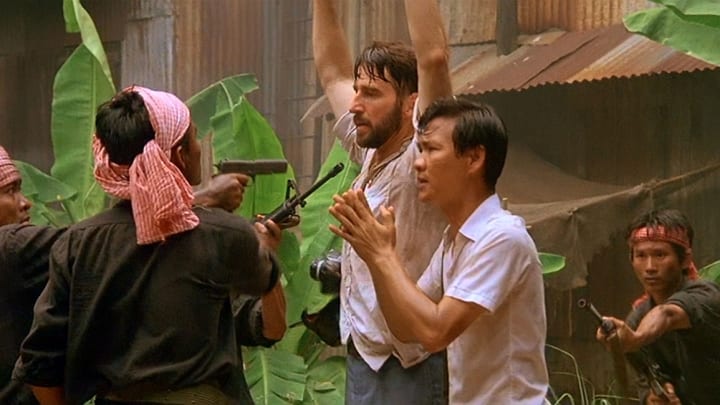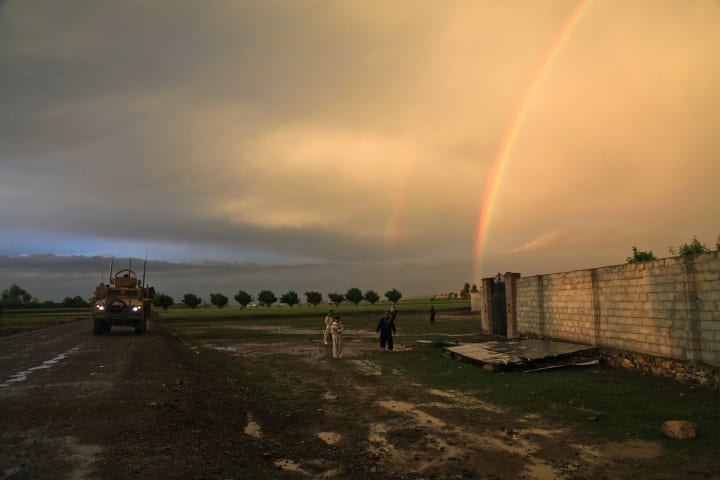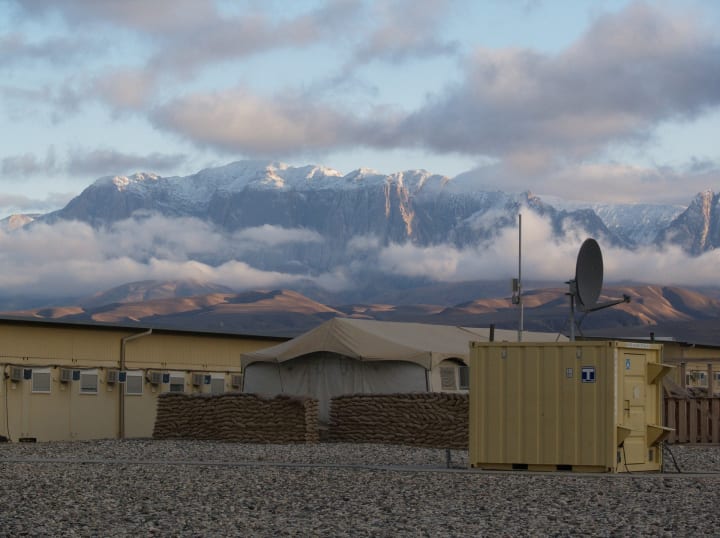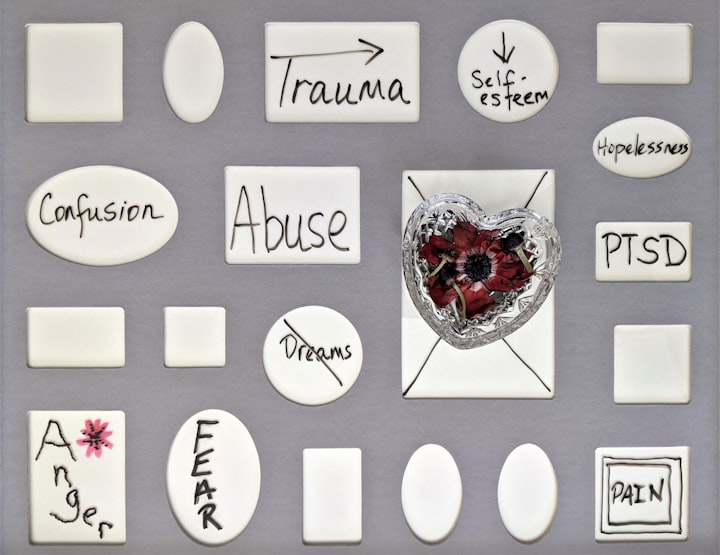Life Imitating Art: From ‘The Killing Fields’ to Afghanistan
The legacy of Roland Joffé’s 1984 Oscar-winning film is powerful, poignant and profound — and eerily prescient.

There’s an oddly prescient moment, early in the remarkable, harrowing 1984 film The Killing Fields, about journalists working in Cambodia during the Khmer Rouge takeover, where a cynical war photographer for the New York Times, played by John Malkovich, looks doubtfully at the occupying Khmer Rouge guerrillas, many of them 14- and 15-year-old conscripts, some of them with yellow peace flowers sticking out from the barrels of their AK-47 assault rifles, and remarks to Times war correspondent Sydney Schanberg, played by Sam Waterston: “I wonder if these guys are for real.”
“These guys” are guerrillas from the surrounding jungle who have entered the capital with promises of peace and goodwill towards all, even as diplomats and staffers at the Western embassies scramble to get out of the city as fast as they can, shredding documents and burning documents along the way, as panicked city residents try to storm the embassy gates as rescue helicopters clatter overhead.
Sound familiar?
“These guys” were not for real, as it turned out, at least not in the peacenik way, as the world was about to learn. The Khmer Rouge would go on a rampage, ushering in the bloodiest genocide in Southeast Asia since Japanese atrocities of World War 2.
Even today, after Rwanda, Bosnia and Syria, the sheer scale of the Cambodia genocide beggars belief.
At the time, the outside world viewed Cambodia as a sideshow to the Vietnam War, just as 25 years later, the 2001 Afghanistan war would become a sideshow to the invasion of Iraq in 2003.
As we know now, Afghanistan, the war launched in direct response to the 9/11 terror attacks, would become all-consuming, and now it looks as if the Iraq War was the sideshow.

The Killing Fields was and remains a harrowing and eye-opening film. It was nominated for Best Picture, Best Director (Joffé), Best Screenplay (Bruce Robinson) and Best Actor (Waterston) at the 1985 Academy Awards, and won Oscars for Supporting Actor (Haing Ngor, a former doctor and refugee from Cambodia who settled in the US after surviving many of the events depicted in the film), cinematography and film editing.
The Killing Fields was more than a film, though. Looking back on it today, talk of Oscars, box office and positive critical reviews seem almost trivial.
The moral and ethical dilemma at the heart of the film — what obligation and responsibility do US reporters and media organizations owe to local translators, fixers, drivers and others who help them report the story in a war zone — takes on added meaning when that war zone is suddenly flipped upside down and many of the same local people who helped reporters now face likely arrest, torture and, in many cases, execution.
The Killing Fields was the kind of film that allows you to believe cinema can be something more. There are moments so realistic you don’t even know if you’re watching a movie.
In real life Schanberg would be reunited with his interpreter Dith Pran in a refugee camp on the Thai-Cambodia border, after Pran improbably survived the genocide and made it to safety.
Schanberg’s account for the NY Times Magazine, titled “The Death and Life of Dith Pran,” would win him the Pulitzer Prize.
History has a way of repeating, though, especially when we’re not paying attention.
“If the Taliban find me, they will kill me and my family,” an abandoned Afghan interpreter told CNN, just days ago, over a crackling phone line from Kabul, Afghanistan’s capital.
When he hears a knock on the door, he told CNN, the first thing his wife does is hide their children.

A CNN reporter first met the interpreter, Haji (not his real name), some 10 years ago, while embedded with US Marines. “If they find me they will kill me and they will kill my family because I was an interpreter with the US Marines,” Haji told CNN.
History repeats in other ways. Haji has tried to reach safety through a US visa program for interpreters, but his application — submitted three times, rejected three times — has become snarled in bureaucratic red tape, despite repeated efforts by many of the Marines he worked with to vouch on his behalf.
CNN, arguably the world’s most high-profile, recognizable news organization this side of BBC, has become involved, but time is pressing.
And as The Killing Fields shows, even big media organizations like CNN and the New York Times can only do so much when a war zone spirals out of control and fast-breaking events on the ground take on a life of their own.
Taliban insurgents have already executed — murder is the stronger, probably more apt word — Afghans who helped US and other coalition forces. Thousands of interpreters and other helpers are now targets for retribution.
It’s amazing — and not a little ironic — to think how the lines between art and life can become blurred.
The Killing Fields, made 37 years ago, has so much to say about what is going on today, right now, in Afghanistan. It’s not an easy watch, but it’s definitely worth seeing. Perhaps today more than ever.
It’s amazing — and not a little ironic — how the lines between art and life can become blurred. The Killing Fields has much to say about what's going on today, right now, in Afghanistan.
It’s not an easy watch, but it’s definitely worth seeing.
Perhaps today more than ever.

About the Creator
Hamish Alexander
Earth community. Visual storyteller. Digital nomad. Natural history + current events. Raconteur. Cultural anthropology.
I hope that somewhere in here I will talk about a creator who will intrigue + inspire you.
Twitter: @HamishAlexande6






Comments
There are no comments for this story
Be the first to respond and start the conversation.